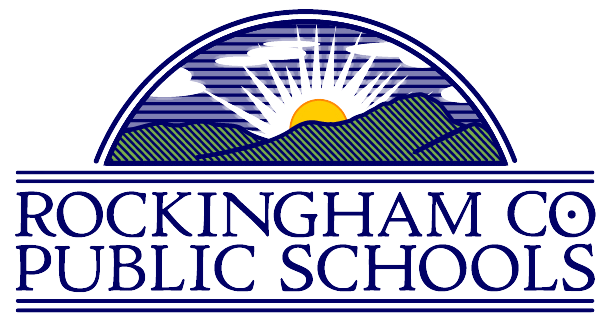On May 17, 2025, the 71st anniversary of Brown v. Board of Education, students from Rockingham County Public Schools led two powerful commemorations in the Shenandoah Valley: the unveiling of a state historical marker at the Federal Courthouse in Harrisonburg and the opening of a student-curated exhibition at Rocktown History in Dayton. Together, these projects highlight the power of inquiry-based learning and civic action to shape a full and honest public memory.
Back Row: Owen Longacre, Pria Dua, Alex-Zan, Suetta Dean Freeman, Faye Coleman Hoes, Betty Kilby Fisher Baldwin, Elizabeth Kidd, Beau Dickenson
Front Row: Ann Rhodes Baltimore and Delores Coleman Sandford
The Resilience Amid Resistance marker commemorates the first federal court order in Virginia to implement the Brown decision and begin the desegregation of public schools. It jointly honors Judge John Paul, the NAACP attorneys who brought the cases forward, and, most importantly, the Black student plaintiffs in Allen v. Charlottesville and Kilby v. Warren County, who led and lived this history in Virginia’s classrooms. Later that day, students unveiled a companion exhibition of the same name at Rocktown History in Dayton. Curated by students, the exhibit expands the story behind the marker, tracing the broader fight for school equality across the Commonwealth.
The Honorable Anne Holton, former Virginia Secretary of Education and member of the Virginia Board of Education. Her father, Governor Linwood Holton, played a pivotal role in dismantling Massive Resistance during his time in office.
The exhibition was developed as part of the Farmville Tour Guides Project, a civic learning initiative co-created by Beau Dickenson and Owen Longacre at Spotswood High School. This year’s project engaged students from all four Rockingham County high schools, who collaborated to research, design, and install a museum-quality public history exhibit.
Both the marker and exhibition were centered around the inquiry question: “How do we right history?” This question challenged students to consider how we correct historical omissions and injustices (righting history) while also contributing to public memory through the research, interpretation, and presentation of the past (writing history). Their work was grounded in the Inquiry Design Model (IDM), which engaged them in analyzing primary sources, posing critical questions, and taking informed civic action.
The project exemplifies the goals of Virginia’s revised History and Social Science Standards of Learning, which emphasize historical thinking and inquiry-based learning. Students applied these skills not only in the classroom but in the public square, using their learning to shape how history is remembered in their own community.
Spotswood High School Student Panel (by Sean Lin)
East Rockingham High School Student Panel (Jake Dibb)
“This was history made by student plaintiffs of the past—and now, history told by the students of today,” said Beau Dickenson, RCPS Social Studies Supervisor. “Our students are not just learning about the past; they’re stepping into the role of public historians to honor the courage of those who came before them and to ensure those stories live on.”
The inquiry was developed in partnership with Dr. Kathy Swan of the University of Kentucky, a nationally recognized leader in inquiry-based education and a lead author of the C3 Framework and Inquiry Design Model (IDM). Collaborating with Dr. Swan were Owen Longacre, NBCT at Spotswood High School, and Tim Van Schaick of Turner Ashby High School. This county-wide initiative also included contributions from T.J. Hindley of Broadway High School, Diana Kemper of East Rockingham High School, and Katie Moran, Instructional Technology Resource Teacher based at Central Office. Leslie Stevens of Turner Ashby High School provided additional expertise in photojournalism and graphic design.
Betty Kilby Fisher Baldwin (far left), Gene Kilby, Ann Rhodes Baltimore, and Goldie Baltimore
Joan Johns Cobbs with Moton Museum Executive Director Cainan Townsend
This entire project was developed in partnership with the Moton Museum, which served as both a historical anchor and a model for truth-telling through public history. As part of their research, students traveled to Farmville to learn not only about the 1951 Moton Student Strike and its central role in Brown v. Board, but also to explore how museums can correct omissions and elevate marginalized stories through exhibition and interpretation. They studied how Moton uses public history to confront injustice with integrity and care, and carried that ethic into their own work. We were deeply honored to have Moton dignitaries join us for both commemorative events in Rockingham County, including Executive Director Cainan Townsend; Joan Johns Cobbs, a Moton student striker, Brown plaintiff, and sister of Barbara Johns; and Robert Hamlin, Moton Board member and survivor of the 1959 Prince Edward County school closures.
The students' work has garnered attention across multiple media outlets, including:
This project stands as a testament to Rockingham County's commitment to academic excellence, student agency, and civic engagement through authentic learning experiences. By connecting historical understanding with contemporary civic action, our students demonstrated the highest ideals of education in a democratic society.
All photos by Cindy Fellows / October Grace Media

